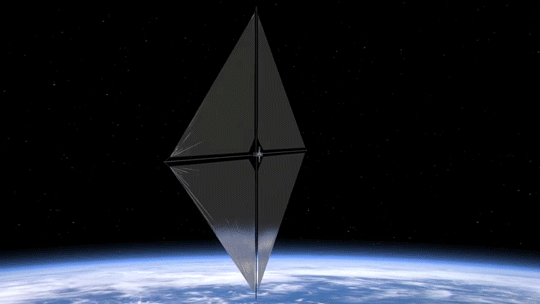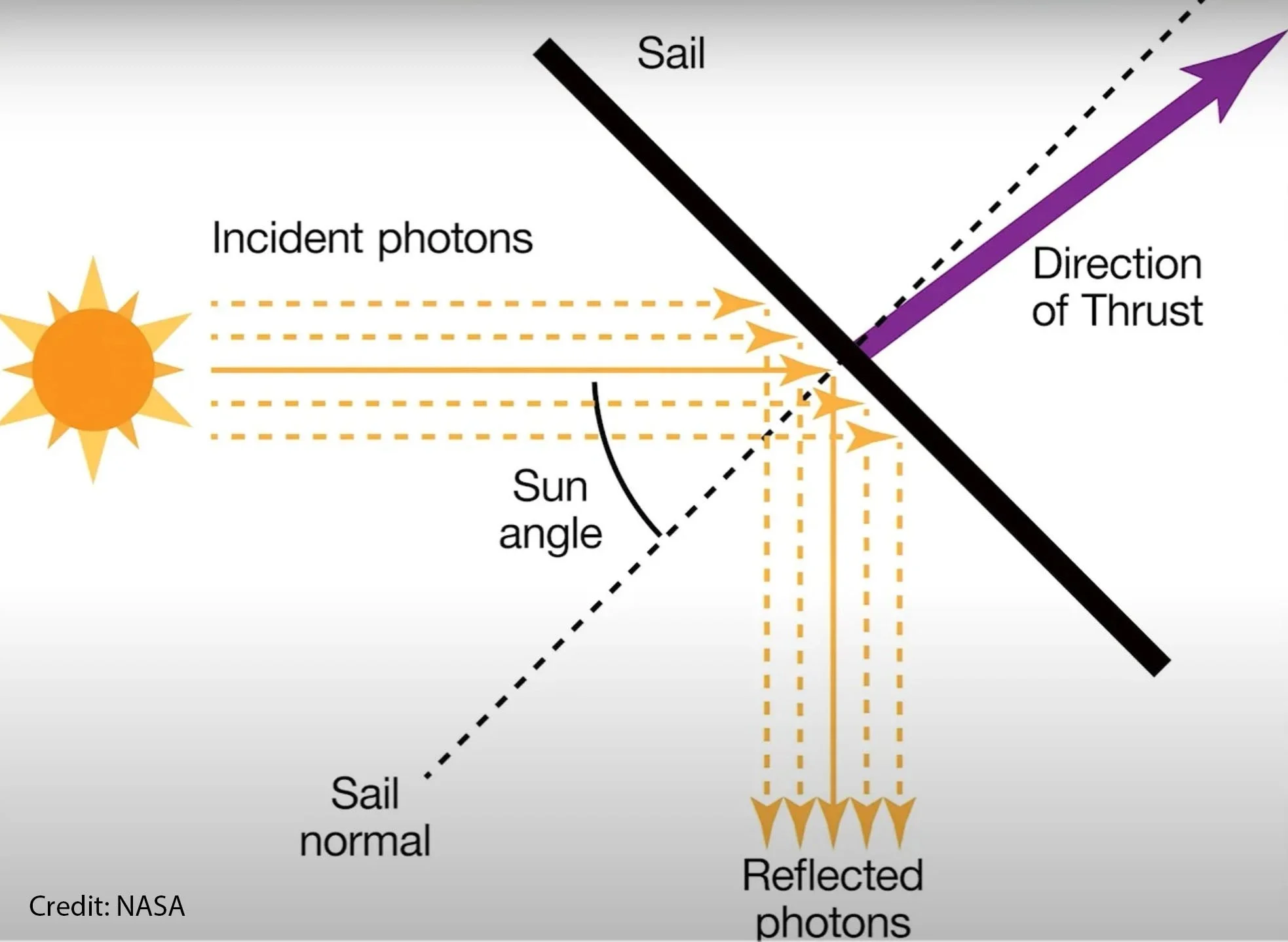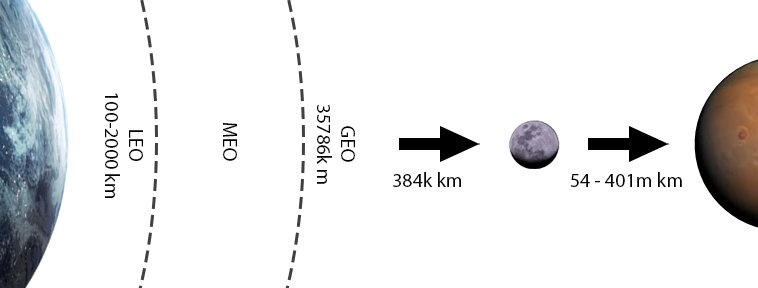Frequently Asked Questions
Credit: NASA
What is a Solar Sail?
Similar to a sailboat on Earth, a solar sail is a spacecraft which relies upon an external source to provide propulsion. Unlike a sailboat, propulsion is not caused by the wind, but by light from the sun (or another source) illuminating a sail made of highly reflective material such as Mylar, Kapton, or CP1.
How does a solar sail work?
By controlling the angle of incidence, the angle which light is reflected, a solar sail craft may change the direction of travel. Actuators, controlled reflectors, or other methods are used to control yaw, pitch, and roll which will change the reflected angle of incidence.
How long will the race take?
Starting from just above Geosynchronous orbit (GEO), in the initial race, solar sail craft will do one lap (orbit) around Earth, a flyby of the Moon with a gravity assist, and then out to Mars. From deployment to Mars, we estimate 130-180 days.
Why from GEO and not LEO?
Multiple upper orbit GTO lift providers are coming on line and are offering ride-share opportunities. GEO provides a much smaller gravity gradient to overcome. Also, by deploying from the “GEO Graveyard” we reduce risk of a failed-deployment impacting operational satellites.
Wait, 130-180 days!?
To quote the Hitchhiker’s Guide to the Galaxy, “Space is big. You just won't believe how vastly, hugely, mind-bogglingly big it is. I mean, you may think it's a long way down the road to the chemist's, but that's just peanuts to space!”
From just above GEO, it will take several days to orbit the first lap before changing course to the Moon and Mars.
During that period, sailcraft will continue to gain speed. They will then head to the Moon, another week. They will then get a gravity assist from a close approach to the Moon. With only a brief shadow on the far side of Earth or the Moon, sailcraft will be in full sunlight for the race duration.
The alignment of Earth and Mars, depending on when we launch, will either provide shorter -optimal- duration race, or a longer duration race. Since it’s unlikely that the race is the primary mission, teams will be beholden to primary mission’s launch schedule. At least for the first race.
Why not fueled rocket ships?
While some may take that approach, there is little new ground in fueled rockets. There are certainly advancements and improvements. But nothing new. Solar Sails are territory with a lot of potential to explore new technology and methods.
Fueled ships burn fuel at the beginning of their journey to achieve a ballistic trajectory and then must burn fuel to decelerate once they arrive. What makes solar sailing unique, sail craft will continue to accelerate throughout the race. They will continue to build speed, something that traditional (rocket) ships can not do. In this iteration, we won’t slow down. Speed is the primary desire, the first sailcraft to take the picture with Mars and the sun in frame, wins.
How will the race be organized?
The race will be managed by Sol Racing Federation with published rules. As engineers and fans of terrestrial racing series, we follow Formula 1, Americas Cup, and other top-tier racing series. However, space is very different from Earth and imposes differently challenging problems to overcome. Our rules will respect the challenging environment of space, but founded by a legacy of racing series around the world.



